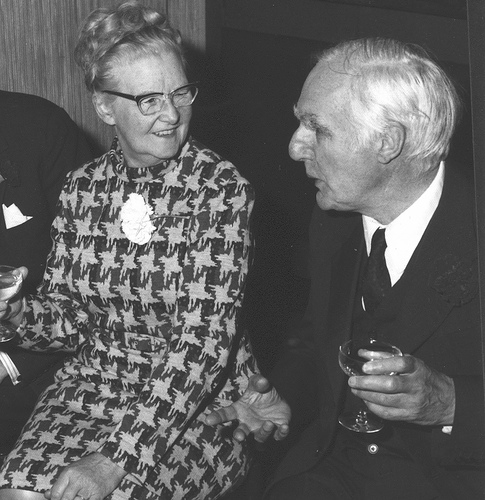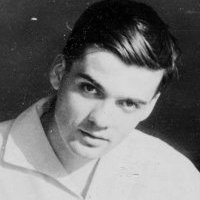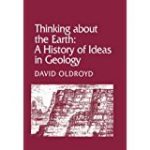David Oldroyd – Book Review: Continental Drift, Colliding Continents, Converging Cultures,
This is an interesting and charming book—even if not strictly an essay in the history of science. The dissident author studied earth sciences in Romania during the beastly Ceauşescu regime but managed to get out by attending a conference in Newcastle and never returning until after the end of Eastern European communism. Yet he remained a Romanian patriot and is presently a professor honoris causa in Bucharest, while residing with his family in salubrious Glyndebourne. Constantin Roman must, by his account, surely be one of the world’s most upwardly mobile earth scientists. Starting in England with only £5 in his pocket, by ability, persistence, and charm, and using Newcastle as a stepping‐stone, he became acquainted with the right people and obtained a scholarship to Peterhouse, Cambridge, to do a Ph.D. on the tectonics of the Caucasus
and across into Central Asia, using seismic data to identify plate boundaries and movements. On this basis, and studying areas of compression and tension, he proposed the existence of two nonrigid “buffer plates”—Sinkiang and Tibet—between the Indian and Eurasian plates. This was an iconoclastic suggestion in the early 1970s. Later, after

Sir Edward Bullard, FRS (1907-1980) celebrating Constantin Roman’s Wedding at Cambridge, 1973, with Molly Wisdom
getting his doctorate under Edward Bullard, Roman became an oil industry consultant and, I infer, made good money. Primarily, the book is about the madness of dictatorships and bureaucracies—and also the lovely life of a research student at Cambridge. When it came to Kafkaesque bureaucracy, the British authorities could be quite as obdurate as their Romanian counterparts: you can’t have a work permit unless you have a job; you can’t have a job unless you have a work permit. The difference, though, was that Roman could enlist support via his influential Cambridge contacts, and eventually he broke the logjam by getting an acquaintance at the Telegraph to offer him a kind of pseudo‐job . He was tenacious, resourceful, and bright, and seemingly charming to boot. It worked! Roman displayed similar qualities as a researcher. When he was well into his Ph.D. work, Bullard drew his attention to a paper emanating from Peter Molnar and his group at MIT that dealt with the same topic and arrived independently at essentially the same theory. The American paper had been refereed and accepted and was shortly to be published. Bullard warned his student that if this happened before Roman submitted his thesis he could only expect to get an M.A. So with bounce and initiative Roman dashed up to London and persuaded New Scientist to publish the main arguments of his thesis before the MIT paper got into print. This is presented as a coup, and
so it was. Roman’s Ph.D. was saved. But while that was all very well for the Cambridge “chaps,” one may wonder what the Americans thought about the matter. We’re not told. We’re not told a few other things either, particularly what happened between Roman and his first supervisor, Dan McKenzie . We are, however, told much about the delightful “lotus eaters” at Cambridge and the life there that is open to all—providing they have the right energy, brains, and charm. Roman got where he did by his ample possession of these qualities. But I wonder about Cambridge. It is the privileged tip of a huge social and economic pyramid, supported by a massive base of taxes, endowments, and, ultimately, the exploitation of third‐world lands and peoples and, formerly, of British workers. Roman knew that his home country was a mad dictatorship. He got out, and into what was then undoubtedly a better place. But what of those nameless ones today who suffocate in containers in their desperate struggle to get into Britain, or the refugees who are now incarcerated in alien detention centers in the Australian deserts? The West welcomes some, but not all. Continental Drift says nothing about such matters, but much about winning supporters through contacts, energy, and persistence
Short Bio NOTE: David Roger OLDROYD (1936 – 2014) was an Australian geologist, as well as a historian of geology and evolutionary theory. Oldroyd studied at the University of Cambridge, the University of London and did his PhD at the University of New South Wales, where he was an Associate Professor of the School of Science and Technology Studies, at the time of his death. In 1994 he became a Fellow of the Australian Academy of the Humanities. Oldroyd was Secretary General of the International Commission on the History of Geological Sciences (INHIGEO) (1996-2004) and was thereafter its Vice President. He was President of the Australasian Association for the History, Philosophy, and Social Studies of Science. He was a corresponding member, and in 2008 a full member, of the International Academy of the History of Science in 2002. In 1994 he was awarded the Geological Society of London’s Sue Tyler-Friedman Medal for the History of Geology, and in 1999 the Geological Society of America History of Geology Award. He spent many years as editor of Earth Sciences History, and was the author of many important works on the history of geology.





No Comments so far ↓
Like gas stations in rural Texas after 10 pm, comments are closed.